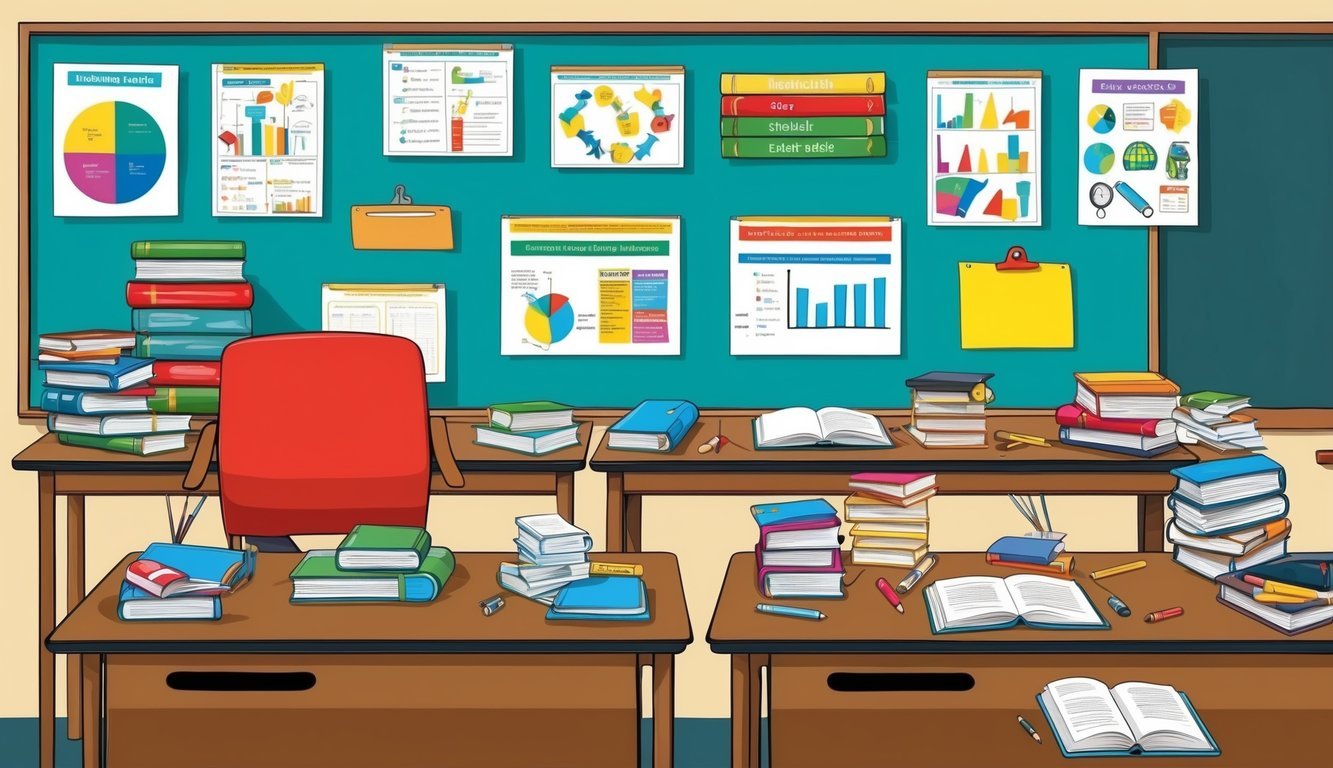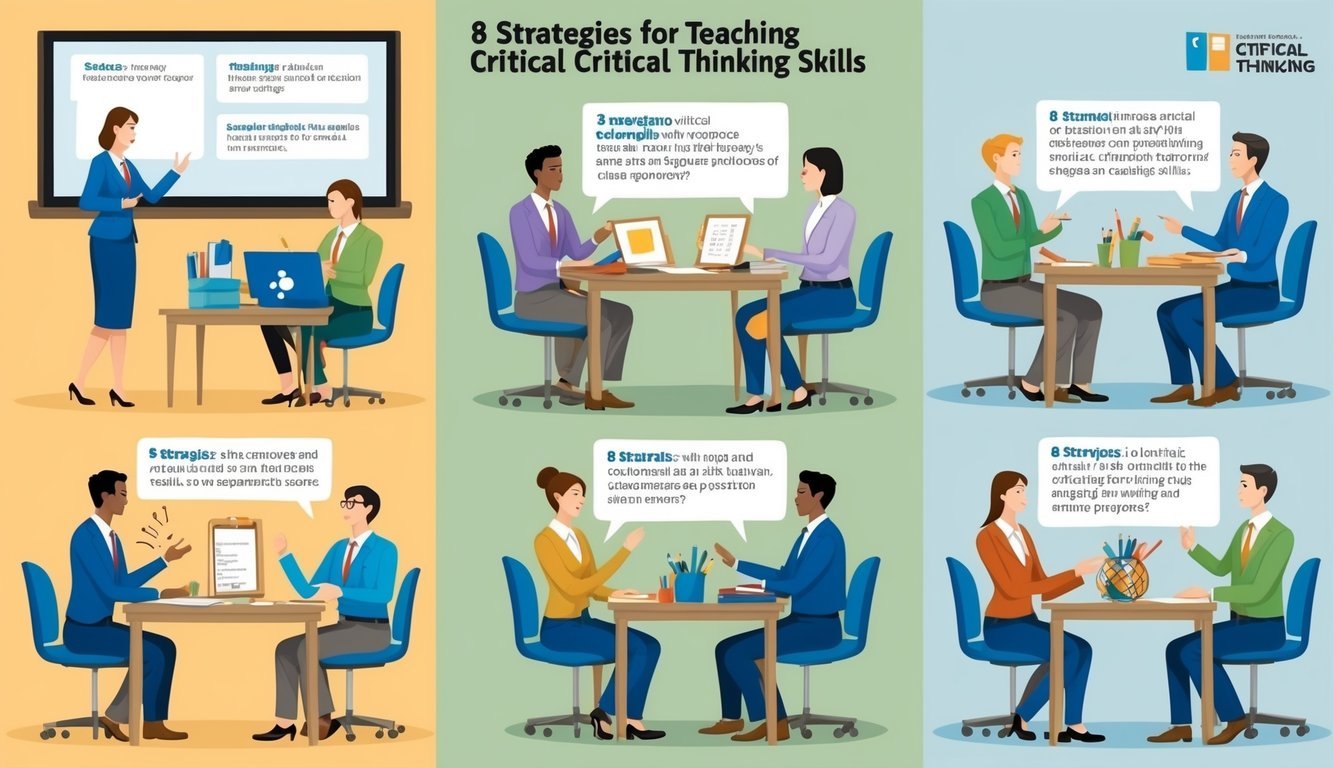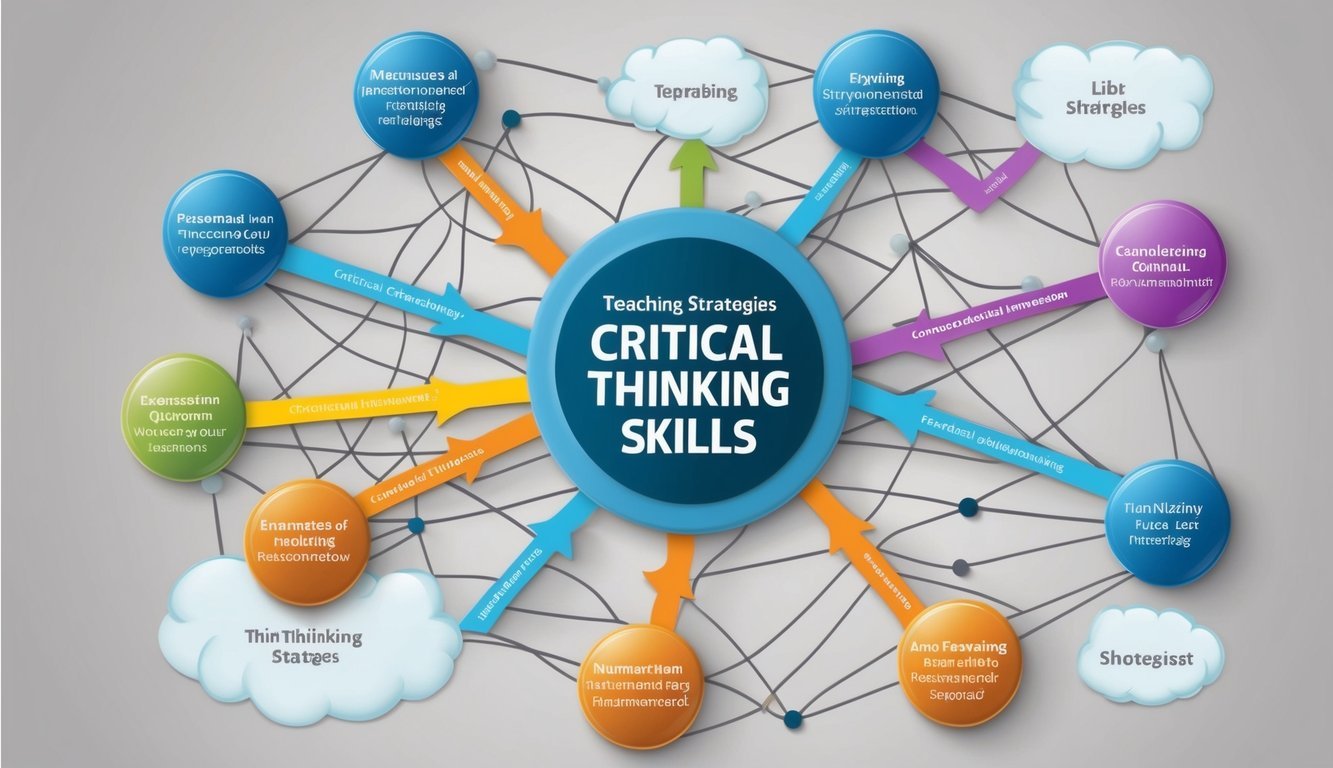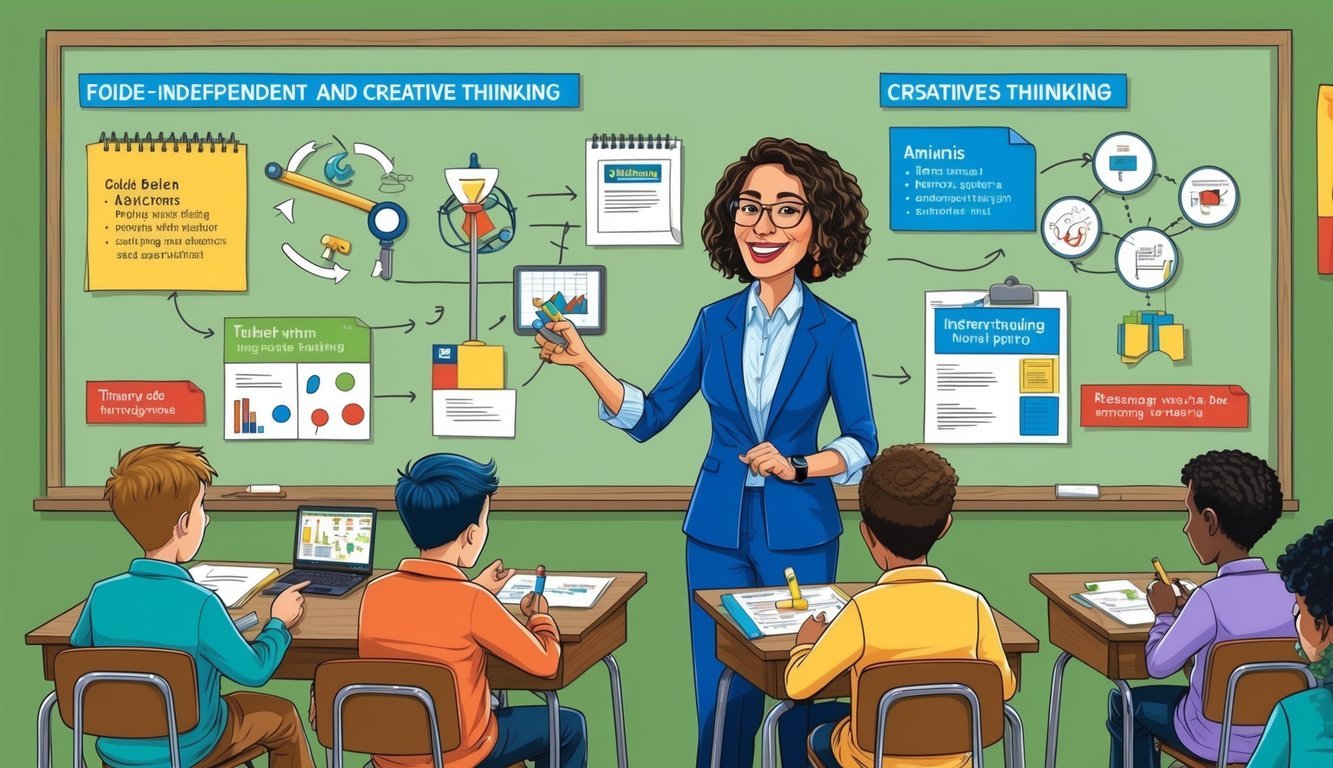Critical thinking is a must-have skill in our speedy world.
It’s what helps you sift through all the noise, tackle problems head-on, and make smart choices.
Whether it’s in your personal life, school, or job, sharpening your critical thinking skills can really pay off.
Teaching critical thinking can be tricky, but there are solid strategies that can help students boost these essential skills.
Here are eight tried-and-true methods that can take your students’ ability to think critically to the next level.
You can tweak them for different ages and subjects, which makes them flexible tools for any teacher.
1) Socratic Questioning
Socratic questioning is a fantastic way to spark your students’ critical thinking skills.
This approach is all about asking those thought-provoking questions that get them reflecting deeper.
Start off with open-ended questions that shake up their assumptions.
You might ask, “What makes you think that?” or “What evidence do you have to back that up?”
Encourage them to question each other’s ideas in a respectful way.
It creates a classroom where different perspectives can be shared and discussed.
And don’t forget the follow-up questions! Digging deeper into their responses can really help.
You could ask them to clarify their thoughts, give examples, or even think about other angles they might not have considered.
By consistently using Socratic questioning in your lessons, you’ll be guiding your students to think independently and become better at solving problems.
2) Debate Team Activities
Debate activities can be a game-changer for developing critical thinking.
Engaging in structured debates teaches students to analyze complex issues from all sides.
Kick things off by splitting the class into teams and picking a controversial topic.
Each team needs to do their homework and gather solid evidence to support their arguments.
During the debate, it’s all about communicating clearly and on-the-spot thinking as you respond to opposing views.
Active listening is key; you want to really hear your opponents’ arguments so you can figure out where their weaknesses lie and craft strong rebuttals.
After the dust settles, take a moment to reflect on what everyone learned and how they can improve their argumentation skills for next time.
3) Case Study Analysis
Case study analysis is another powerful tool for honing critical thinking skills.
It’s like bringing real-world scenarios into the classroom and seeing how theoretical concepts play out in practice.
Choose case studies that tie in nicely with what you’re teaching.
Start dissecting the case by identifying the key issues and the people involved, giving students a better understanding of complex problems.
Encourage them to view the case from different perspectives and brainstorm potential solutions.
Question everything, and don’t shy away from looking for hidden factors that might be influencing the situation.
As they work through these real-life scenarios, they’ll naturally enhance their analytical and problem-solving abilities.
4) Problem-Solving Workshops

Problem-solving workshops offer a hands-on way to build critical thinking skills.
In these workshops, students dive into real-life situations where they’ll need to apply analytical thinking to come up with solutions.
The small-group format lets them tackle tricky problems that don’t have easy answers.
This collaborative setup encourages students to consider different angles and challenge their assumptions.
During these workshops, they’ll learn to break problems down into smaller, manageable bits.
They’ll identify key issues, gather information, and evaluate what solutions might work best.
Facilitators can introduce techniques like brainstorming and mind mapping, giving students tools to think more critically and systematically about problems.
Plus, these workshops simulate real-world challenges.
Students will face time constraints and conflicting priorities—just like they’ll encounter in a work environment.
Participating will make them feel confident addressing complex issues and also enhance teamwork skills.
5) Reflective Journaling

Reflective journaling is a fantastic way to enhance critical thinking skills.
Writing down your thoughts and experiences puts you in a space of active reflection and analysis.
Try setting aside just a few minutes each day for your journaling.
Focus on recent events, decisions you’ve made, or any problems you’ve faced.
Ask questions like, “Why did I go this route?” or “What could I have done differently?”
Look for patterns in your thinking as you write.
Are you making assumptions? If so, challenge them! This practice helps you gain a clearer, more objective view of situations.
Don’t stress over grammar or how polished it is.
Just let your thoughts flow freely.
Make this a regular habit, and you’ll start to notice real improvements in your ability to analyze complex issues and come up with creative solutions.
6) Role-Playing Scenarios

Role-playing can be a fun and effective way to develop critical thinking skills.
By stepping into someone else’s shoes, you can gain new perspectives and practice solving real-world problems.
Set up scenarios where students assume different roles and work through challenges together.
This could involve historical characters debating issues or professionals solving workplace problems.
Role-playing can build confidence and promote lively thinking.
It helps students analyze situations from various viewpoints, giving them a richer understanding of the topic.
Using digital role-play games can also spice things up, encouraging students to engage in tasks like finding assumptions and making deductions.
And in fields like healthcare, simulating real-world situations has shown to enhance critical thinking skills.
Just remember to wrap up with a debrief.
Discuss the outcomes, decisions made, and other possible approaches.
That reflection solidifies the critical thinking skills they practiced.
7) Brainstorming Sessions

Brainstorming is a fantastic strategy for nudging students’ critical thinking skills forward.
By creating a space where ideas can flow freely, you encourage creativity and critical thinking.
Start with a problem or topic, then invite everyone to chime in without any judgment.
This helps students learn how to generate multiple solutions and perspectives.
Encourage them to think outside the box and build on each other’s ideas.
It develops their creative problem-solving abilities while promoting collaboration.
To keep things moving, set a time limit and jot down ideas on a whiteboard or digital tool so everyone can visualize connections between concepts.
After brainstorming, guide your students in evaluating and refining ideas.
This step builds their reflective thinking skills and teaches them to be more critical of the suggestions provided.
And don’t forget to take breaks! Keeping minds fresh is key to maintaining engagement and encouraging critical thinking.
8) Concept Mapping

Concept mapping is an awesome tool for visualizing complex ideas and their connections.
It helps you break down information in a meaningful way.
To create a concept map, start with a main topic and branch out with related ideas.
Draw connections with lines and short notes to explain the relationships.
This process encourages deep analysis of information, helping students see connections they might have missed before.
Try incorporating concept mapping into your study sessions.
It’s a great way to tackle new topics or review material in preparation for tests.
The visual organization makes it easier to keep track of key concepts.
Research has shown that using concept mapping can lead to improved critical thinking skills.
It’s a versatile approach that works across various subjects and caters to different learning styles.
Remember, practice makes perfect—keep using these maps, and you’ll find those critical thinking skills really clicking into place.
Understanding Critical Thinking

Critical thinking is a key skill that boosts your problem-solving abilities and decision-making prowess.
It’s all about analyzing information in an objective way and evaluating arguments to draw well-founded conclusions.
What Is Critical Thinking?
Critical thinking is thinking clearly and rationally about what you believe or do.
It involves questioning assumptions, examining evidence, and weighing different viewpoints.
Concrete examples of critical thinking include:
- Analyzing arguments
- Evaluating sources
- Identifying biases
- Drawing logical conclusions
When you engage in critical thinking, you’re not just taking things at face value.
You’re digging deeper, actively connecting ideas, and looking for inconsistencies.
Critical thinkers often ask questions such as:
- What evidence backs up this claim?
- Are there other explanations?
- What might be the potential impacts?
Importance of Critical Thinking in Education
Critical thinking isn’t just a luxury in education—it’s essential.
It empowers you to be an independent learner and thinker, helping you tackle complex topics and make well-informed decisions.
In today’s world, being able to analyze scientific evidence critically is key.
This skill enables you to:
- Evaluate media reports
- Assess research findings
- Make smart personal choices
Critical thinking enhances your problem-solving skills across various subjects, encouraging creative approaches to challenges.
In math, for instance, critical thinking can make it easier to:
- Identify patterns
- Apply theories to different scenarios
- Develop metacognitive knowledge
By nurturing critical thinking, teachers set you up for success in higher education and your career ahead.
Developing a Critical Thinking Mindset

Having a critical thinking mindset is all about analyzing information objectively and making reasoned decisions.
It’s about cultivating curiosity, approaching problems with an open mind, and honing your analytical skills.
Encouraging Curiosity and Open-Mindedness
To develop that critical thinking mindset, start by embracing curiosity.
Ask yourself questions about the world around you, and don’t be afraid to challenge your own assumptions.
When new ideas come to light, resist hastily dismissing them.
Instead, give them a chance by considering other perspectives.
This broadens your understanding and helps you spot any biases you may have.
Practice active listening in conversations.
Make an effort to truly grasp others’ viewpoints before forming your own opinion.
This open-minded approach can widen your lens and strengthen your critical thinking.
Engage with content that challenges your beliefs.
Read articles or watch documentaries on topics you might know little about.
You’ll not only expand your knowledge but also enhance your critical thinking skills.
Fostering Problem-Solving Skills
Great problem-solving skills are crucial for critical thinking.
Start by breaking down complex issues into bite-sized parts.
This makes them less daunting and easier to tackle.
Look for the root causes behind problems, not just the symptoms.
Pay attention to patterns and how different pieces of information connect.
Use brainstorming to come up with several solutions.
Don’t settle for the first one that comes to mind; think critically about potential outcomes and any drawbacks those options might have.
Seek feedback on your problem-solving methods.
Others might offer insights or alternative angles you hadn’t thought of, sharpening your critical thinking process.
Look for opportunities to practice your skills in real life.
The more you use them, the stronger your critical thinking mindset will get.
Practical Applications of Critical Thinking

Critical thinking skills can be applied in all sorts of ways to enhance learning and problem-solving.
These practical applications help students connect what they learn in class to real-world situations while sharpening their analytical skills.
Integrating Critical Thinking into Everyday Lessons
You can weave critical thinking into daily lessons by asking open-ended questions.
Push students to analyze information instead of just memorizing facts.
Encourage them to compare and contrast different concepts or ideas.
Use debates and discussions to foster critical thinking.
Assign roles where students need to argue from different standpoints.
This practice helps them consider multiple viewpoints and strengthens their reasoning skills.
Implement problem-solving activities that require students to apply their knowledge in fresh ways.
For instance, in a science class, present a scenario where they’d need to design an experiment to test a hypothesis.
Teach your students how to evaluate sources critically.
Have them judge the credibility of information they find online or in textbooks.
This skill is particularly crucial in our information-rich world.
Using Real-World Scenarios in the Classroom
Bringing real-life situations into your lessons makes critical thinking more relevant.
Use current events for analysis and discussions so students can see how the skills they learn apply immediately in their lives.
Create case studies based on actual problems from various fields.
For example, in a business class, present a real company’s marketing challenge and ask students to develop solutions.
Consider organizing field trips or inviting guest speakers to share real-world experiences.
These exposures help students see how critical thinking plays out in different professions.
Encourage projects that require students to tackle community issues.
This not only sharpens their critical thinking but also develops their civic engagement skills.
Lastly, use role-playing to simulate real-world scenarios.
This lets students practice decision-making and problem-solving in a safe learning environment.

